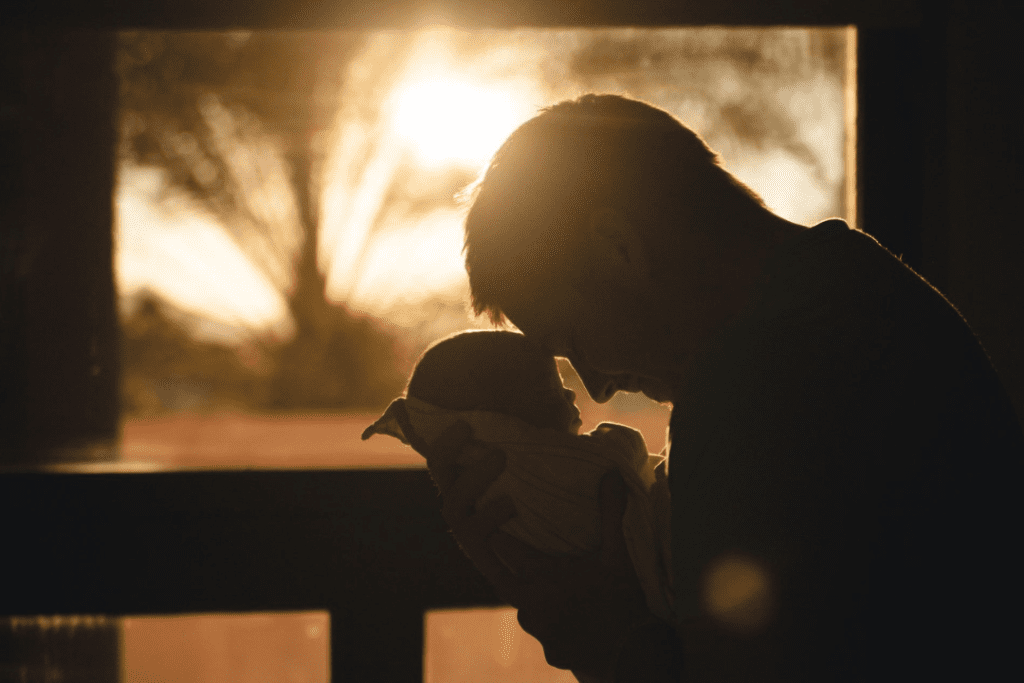Before carrying out a biographical interview, it’s important to consider the approach you’ll take. This can be influenced by a number of factors, such as time, resources, topic, research agenda, accessibility, priority, comfort and willingness of your interviewee, even your ability to secure a work visa. Your approach will influence what information is gathered, with different approaches and questions leading to different results.
Interviewing for biography takes inspiration from the scientific approach of academia, the tenacity of journalism and the transparency of oral history. In ‘Life Story Interview’, Atkinson said, “the life story interview can be approached scientifically, but it is best carried out as an art”.
This article discusses different approaches to biographical interviews, including chronological, thematic, emotive and narrative interviews, as well as the choices between structured, semi and unstructured interviews.
Structured, semi and unstructured interviews
Highly structured interviews include questions which must be asked verbatim, without the inclusion of new or improvised questions. This style of interview fails to take into consideration the interviewee’s response and therefore fails to explore new avenues of discussion. It’s often used in academic and scientific research and can be particularly useful in biographical research when verifying information.
Svend Brinkman states that semi-structured interviews include the interviewer as part of the creation process. These interviews are useful in their ability to work with and build upon spontaneity, whilst keeping focused on the goals of the discussion.
In a semi-structured interview, you might have a list of questions, but when appropriate you might choose to ask unplanned questions to explore new avenues.
Unstructured interviews are often used in researching a life story. The interviewer takes a back seat and their main role is to listen. In unstructured interviews, the interviewer may not know in advance what to ask or what direction the interview will take. This is particularly useful in the first narrative interview, where the interviewer may be seeking to gain a broad perspective of their biographee’s life.
Each of these interview styles can be used in the following approaches, and it’s possible for biographers to utilise a variety of approaches when conducting interviews for biography. The choices will depend on your objectives: for example, to verify a timeline, a thematic approach may be suitable, and to elicit descriptions of a place, an emotive approach may be the best option.

Chronological
A chronological approach to biographical interviews involves starting the interview by asking about the interviewee’s early life, starting with their birth, moving through childhood and adolescence then into adult life until you reach the present day. The interviewer may even choose to start earlier, asking about the interviewee’s parents or grandparents, where their parents were born, where they lived, what they did for work and so on.
In ‘Questioning the Subject in Biographical Interviewing’, Jennifer Harding suggests that the chronological format is one that people come to expect, and that it works. Oral historian Donald Ritchie argues that people can easily recall their memories in chronological order, however Harding argues that interviewing with a chronological approach results in a summary — that the results are superficial and stereotypical.
In Doing Oral History, Ritchie cites Cathy Courtney, interviewer with British National Life Stories. Courtney said that in oral history, discussing the chronology first builds rapport for a deeper narrative discussion later and helps facilitate “the ramble, the anecdote, the digression” that is needed for an in-depth discussion.
Harding also argues that the chronological approach to interviewing gives the interviewee power to decide what will be discussed and that this approach is less of an invasion of privacy. Conversely, Harding also notes that this approach can be invasive, for example, if interviewees have had traumatic experiences as a child, starting with a chronological approach could “possibly cause the interviewee to close off and withdraw”.
In ‘The Life History Interview’, Erin Jessee notes that chronological interviewing can trigger distressing or culturally inappropriate memories. Jessee noted that her subjects found it “jarring and painful” to take a chronological approach, which often involved someone’s passing, so she changed her first question to something less structured, such as “tell me about your life” so that interviewees could “broach these memories on their own terms and in their own time”.
Thematic
Following your preliminary research, it’s possible that you’ve observed themes in your subject’s life, and may wish to cover these in more detail.
Thematic questioning can focus on specific subjects or episodes, rather than looking at the interviewee’s entire life. Examples of themes include childhood, education, marriage, career, or perhaps something more specific, such as the day a person was in a car accident.
When interviewing young people leaving foster care, Harding noted that a thematic approach was a useful alternative to a chronological approach, due to their negative experiences of being in care.
Thematic interviews may take a less structured, narrative approach, with the interviewer asking questions and allowing the interviewee to speak at length. Ritchie suggests asking general, open-ended questions first, such as “please tell me about your childhood” before moving on to more specific questions such as asking which schools they attended.
Thematic approaches may not be suitable at times, such as when the interviewer knows little about the interviewee prior to meeting. This is unlikely to occur when interviewing the biographee, but might be the case when interviewing other individuals such as the subject’s family or friends.
Sociologist Gabriele Rosenthal notes that there is a downside to using a thematic approach during research interviews. When researching experiences in Hitler Youth, Rosenthal initially took a thematic approach by asking interviewees to tell her “their biographical experiences during childhood and in the years following the collapse of the Third Reich”. She later changed her approach to focus on the full life story first. She thought that initially asking people to tell their life tory was too demanding on them, that “they would not know what they should talk about and what they should leave out” but later she realised she had her “own blind spots”, for example, she didn’t explore their parents’ involvement in the Nazi party in enough detail.
Life writer Patti Miller suggests that a thematic approach “gets the job done, but the writing has a flatness”, because when we think thematically, the left side of the brain is used, the logical side, rather than the right, creative side. Miller suggests an alternative: the emotive approach.
Emotive
In writing a biography, we seek not only facts, but also feelings, descriptions of place and people. Kolbert (cited by Ritchie) notes that people may find it easier to remember how they felt, compared to remembering facts from the same period. In collecting oral histories from immigrants, Kolbert said, they might “not remember their daughter’s phone number. But they do remember what it was like when they got off the boat”.
Ritchie shared how Robert Gildea asked an elderly interviewee if she had memories of the mayor in 1942: she replied that she did not, but when asked about life under German occupation, the “question triggered numerous memories of the war, the bombings, and the neighbours who had died, none of which she had forgotten”.
Miller suggests appealing to a person’s senses to access memories — strategies such as listening to music from a specific era, looking at photos, preparing and eating food from that time, searching for smells from that time, such as flowers, perfumes, spices; drawing or viewing maps, touching and exploring objects such as jewellery, furniture or watching tv programs from that time. In Doing Oral History, it’s mentioned that Barbara Myerhoff studied elderly Jews and noted that “their memories could be evoked by singing, dancing, smelling, and tasting”.

Narrative
Narrative interviews tend to start with an unstructured approach before moving to a semi-structured format. Johnson and Rowlands note that subsequent interviews might be thematic, as the interviewer seeks to confirm or verify information or test theories.
Narrative interviews take a postmodernist approach to interviewing, acknowledging the subjective nature of truth. In The Oxford Handbook of Qualitative Research, Holstein and Gubrium note that in narrative interviews, the interviewer and interviewee are “co-constructors of meaning” and meaning is discovered through their interaction, and similarly, Talmage states that the interviewer plays the part of “active listener and collaborating participant”. The resulting interview is a construct of the interaction between the interviewer and interviewee, that is, the interviewer is part of the interview.
Nobel Laureate and oral historian Svetlana Alexievich stated that there are at least three people present in this type of interview: the one talking now, the one the interviewee was at the moment of the event, and herself.
This subjective approach acknowledges that what the interviewee says has been filtered through today’s lens. Miller argues that this subjectiveness is more important than facts, and Alexievich stated that “feelings are reality”. Alexievich embraces subjectivity and said, “it is impossible to go right up to reality. Between us and reality are our feelings. I understand that I am dealing with versions, that each person has her version and it is from them, from their plurality and their intersections that the image of the time and the people living in it is born”.
In a narrative interview, Atkinson notes that the interviewer asks strategic, open-ended questions to encourage detailed, in-depth responses from the interviewee. Fontana refers to this as an unstructured or in-depth interview, where the interviewer has a goal of “allowing interviewees as much latitude as possible in answering OPEN-ENDED QUESTIONS and going off in directions of their own.”
Oral historian Sherna Gluck said “the best oral history is a quasi-monologue on the part of the interviewee”. It may involve moving back and forth through time and the interviewee may make links between events and parts of their life.
Lillrank states that the idea that the interviewer can help the interviewee find their voice “is founded on the idea that when an interviewee tells about herself, it also invites increased self-reflection and awareness”. Atkinson tells us that “life storytelling is a process of personal meaning making” – telling a life story helps a person understand their own life over time, it helps them see connections. Svetlana Alexievich said that “as people narrate, people create, they ‘write’ their life”; and Birgitte Possing sees biography as a “story about and an interpretation of life”.
Jessee notes that a narrative approach gives power to interviewees to decide when they are comfortable discussing difficult topics. Jessee found that in her research of genocide, some interviewees found some topics were “incommunicable, unbearable, or irretrievable” and that by letting interviewees lead the interview, she could learn which topics “they found possible to narrate” and where she needed to exercise caution or more sensitivity.
Harding notes that this style of interview “requires a high degree of skill, confidence and experience in interviewing” — this style of interview can be unpredictable and present logistical challenges.
The subjective nature of narrative interviews is a sticking point for some. Some are reluctant to relinquish power to the interviewee to decide which events and memories are worth discussing.

How to get started in a narrative interview
As a biographer, your primary and secondary research will influence which questions you choose to ask in a narrative interview. Jessee states that the key with a narrative interview is to minimise interruptions and questions and to only ask enough to guide the interviewee.
Observe and listen to what they say, how they say it, what they focus on and which stories they omit from the discussion.
Consider starting with a broad, open-ended question. In conducting field research, Blee starts with one question, such as “Can you tell me how you got to where you are now?”. Sociologist Gabriele Rosenthal starts by seeking a life story. By asking a broad, open-ended question, interviewers are able to encourage their interviewee to talk about a wide range of topics and experiences.
Focus on listening and not interrupting. Take notes as appropriate, which can assist in deciding what follow up questions to ask.
Once your interviewee stops discussing the topic, ask another open-ended question or ask a specific follow-up question about what they have said. It’s a chance to ask for details and to clarify any points of confusion or contradiction.
Interviews may change direction. If the interviewee goes on a tangent, consider rolling with it. Johnson & Rowlands state that “such digressions or divisions are likely to be very productive, so the interviewer should be prepared to depart from his or her prepared plan and ‘go with the flow’” but still be “assertive enough to return the interview to its anticipated course when necessary”.
Before subsequent interviews, review your notes and develop questions based on these, including open-ended questions to facilitate discussion and also closed-ended questions to verify experiences discussed in the prior interview.
Talmage notes that depending on how many interviews you choose to do, later interviews are a useful opportunity to help your interviewee gain a clearer narrative, point out conflicts or alternative points of view.
Rosenthal notes that subsequent interviews are an opportunity to conduct thematic interviews. Following a thematic interview, Rosenthal asks questions based on a specific research agenda; she leaves these questions until the end, to ensure that during the first interview, the interviewee can decide which topics are relevant.
Next in this series: How to ask questions in a biographical interview.

0 Comments